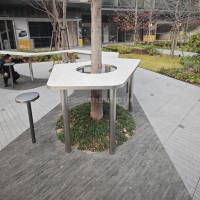Welcome to the website for landscape facilities products and knowledge.
How does the design address accessibility for individuals with disabilities?
In today's world, design plays a pivotal role in ensuring inclusivity for individuals with disabilities. By incorporating universal design principles, modern architecture and digital interfaces are breaking barriers and creating environments that cater to diverse needs.
Physical spaces now prioritize features like wheelchair ramps, tactile paving, and braille signage to assist those with mobility or visual impairments. Public buildings, transportation hubs, and even residential areas are increasingly adopting these elements to foster independence and ease of movement.
Digital accessibility has also seen significant advancements. Websites and apps integrate screen readers, keyboard navigation, and adjustable text sizes to accommodate users with visual, auditory, or motor disabilities. Compliance with standards like WCAG (Web Content Accessibility Guidelines) ensures that technology remains inclusive.
Moreover, sensory-friendly designs are gaining traction, addressing the needs of individuals with autism or sensory processing disorders. Soft lighting, noise reduction, and clear wayfinding systems create calming and navigable spaces.
Ultimately, accessible design isn't just about compliance—it's about empathy and innovation. By prioritizing inclusivity, designers empower individuals with disabilities to participate fully in society, proving that good design is design for all.
Related search:

Recommendation
An outdoor bar counter with stainless steel and terrazzo materials in an irregular shape